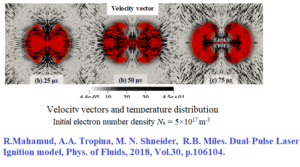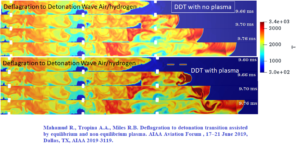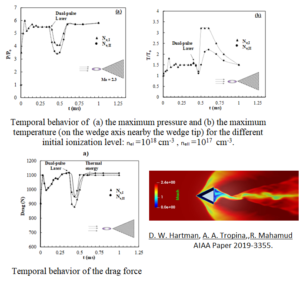Main topics include modeling of equilibrium and non-equilibrium plasma taking into account detailed combustion and plasma kinetics, non-equilibrium plasma physics, breakdown mechanisms, aero-optical effects, flow dynamics and turbulence.
Analysis of dimensionless criteria, main physical mechanisms, internal energy exchange mechanisms, optimization of the energy deposition by plasma discharge for different applications
Applications: Laser ignition systems in scramjets, nanosecond pulsed discharge ignition systems for internal combustion engines, a nanosecond pulsed igniter for the flame stabilization, laser plasma for drag reduction in the supersonic flow
Research projects
Dual-pulse laser ignition
Objective: Understanding of the role of plasma-driven gas dynamics and chemical species in controllable ignition

Modeling of Plasma Assisted Deflagration to Detonation Transition Assisted by Plasma
Objective: Understanding of the role of localized plasma spots created by laser on the deflagration to detonation transition (DDT) in a narrow duct.

Supersonic Flow control by Laser Plasma
Objective: Understanding of the role of dual-pulse laser plasma on the vorticity generation and drag reduction in the supersonic flow.

